
DAY 1
ARRIVE AHMEDABAD
Arrive Ahmedabad in evening, check inn at hotel.
Overnight stay at Ahmedabad.

DAY 2
AHMEDABAD
Today morning we go for heritage walk of the old quarter of Ahmedabad. Thereafter we proceed to visit the Calico Textile Museum. Afternoon we visit Gandhi Ashram, Hutheesingh Jain Temple, Shreyas Folk & Art Museum & the beautiful handicraft market at Law Garden.
Ahmedabad
It was founded by Sultan Ahmad Shah in the year 1411 A.D. with Blessings of his spiritual adviser Shaikh Ahmad Khattu Ganj Baksha of Sarkhej at the site of an old town of Ashawal and Karnavati. Ahmedabad grew in wealth and splendor for a hundred years and became the centre of skilled craftsmen and merchants. The ancient monuments in and around the City of Ahmedabad may be broadly grouped under two main periods, the first that of Ahmad shah – 1 datable to the first half of the 15th century A.D. , and the second, the period of Mahmud Begada, datable to the second half of 15th century A.D.
The Heritage Walk
The Heritage Walk of Ahmedabad is a guided walk of two and a half hours. This daily affair by the AMC is extremely well designed in guidance and co-operation with CRUTA and Swaminarayan Trust, being operationalised by a group of young volunteers. There is also a half hour special slide show running through pages of the city’s history unfolding back its birth from a 10th century AD ancient site known as Ashaval to the present Walled city refounded during the period of Ahmedshah and onwards. The walk begins from the picturesque Swaminarayan Mandir in Kalupur and ends in the most glorious architectural legacies the Jumma Masjid, covering in between the numerous pols, havelis, ornamental facades, workplaces of artisans and number of magnificent Hindu and Jain temples. Our walk effectively anchored by our volunteer Rajesh Gajjar, proceeded from Kavi Dalpatram Chowk – which housed the great 19th century Gujarati poet – in Lambeshwar ni Pole, to the classic reminisces of the city’s textile era – the Calico Dome to the century old Kala Ramji Mandir in the Haja Patel ni Pole with a unique idol of Lord Rama in dark colour and in a sitting posture.
CALICO MUSEUM – CLOSED ON WEDNESDAYS & PUBLIC HOLIDAYS. PERMISSION OF VISIT IS STRICTLY SUBJECT TO A PRIOR PERMISSION.
ENTRANCE: NO ENTRANCE CHARGE
GUIDED TOUR: TIMINGS – 1030HRS TO 1230HRS
LOCATION: CHAUK
Indian Textiles influenced by the Mughal and Provincial Courts 17th-19th Century
Textile Trade of India with the outside world – 15th-19th Century
Indian Co Regional Embroideries of India 19th Century
Costumes in the Calico Collection – 18th to mid-20th Century (Sindh, Kutch, Kathiawad, Tamilnadu, Orissa, Mithila (Bihar), Bengal, Punjab, Chamba (Himachal Pradesh)
Indian Tie-Dyed Fabrics
Techniques of Weaving and Dyeing
Wooden Blocks for Printing on cloth
Gandhi Ashram : On a quiet peaceful stretch of the Sabarmati river, Mahatma Gandhi set up a simple retreat in 1915. This was his Satyagrah Ashram and for many years it was the nerve centre of India’s freedom movement. It was from here, in 1930, that Mahatma began his famous Dandi March to the sea to protest against the Salt Tax imposed by the British. Hridaya Kunj, the simple cottage where he lived, is now a national monument and preserved as it was during the Mahatma’s life-time.
Hutheesingh Jain Temple : Built outside the Delhi Gate in 1850 by a rich Jain merchant, the Hutheesing Temple is the best known of Ahmedabad’s many ornate Jain temples.
Shreyas Folk Museum :Shreyas Folk Museum is an educational museum exhibiting folk arts and crafts of Gujarat. It is located 2.5km west of Sabarmati in the suburbs of Ahmedabad district. As the name suggests, the exhibits at the museum include art, craft, textile and clothing, coins, weapons, toys, costumes, masks, puppets and musical instruments. One of the highlights at this museum is a complete elephant skeleton (3.19m high). Photography is not allowed.
Museum remains open from Tuesday to Saturday: 3:00 to 5:30 pm
Sunday: 10.30 am to 1:30 pm, 3:00 to 5:30 pm.
Museum remains closed on: Mondays, (weekly holiday)
Nine public holidays: Raksha Bandhan, Janmashtmi, Dashera, Dipawali, New Year, Bhai Beej, Dhuleti, Uttarayan, Mahashivratri
Ten days around Diwali and fifteen days in Summer.
Later we visit the beautiful handicraft market at Law Garden.
Overnight stay at Ahmedabad.

DAY 3
AHMEDABAD-PETHAPUR (37KMS- AHMEDABAD.
Morning we go for an excursion visit to Pethapur. Later we visit Kalamkari artisians in Ahmedabad & have dinner at Vishalla restaurant with a visit to utensils museum.
Pethapur : Elaborately illustrated floral or geometric motifs, over all or alternate repeats, bold or delicate patterned, block prints mark the epitome of textile design sensibility of Gujarat. Block printing is one of the oldest surfacial textile craft forms in world and Gujarat is renowned for this manifestation. The block though a tool in the printing of a textile is a work of art in itself requires great finesse and dexterity and it is a pleasure to watch a block maker at work. The magical marriage created by the transference of patterns delicately etched on a simple block of wood on to the surface of a fabric has created an especially Indian patina which is one of the highlights of world textile history.
Block making is a delightfully intricate explosion, taking into consideration the requirements of the printer while giving vent to the creative impulse of the carver. Block carving is a specialized craft form; right from the selection of the wood which is either sesame or teak, the block maker’s personal touch is evident at every step. The craftsmen work for a variety of clients and therefore his design repertoire is immeasurably vast and evolving for continuous adaptation.
The wood working tools used by the artisans are mostly designed by them. Once the block of wood is polished smooth and ready for engraving the craftsman begins his creation of deep relief work. The negative spaces have to be precise and sensitively planned as it is the block which creates the magic of the finished fabric. Blocks are made in a series according to the amount of colors, the final print will contain. This is highly skilled and meticulous process where registration points of the main block have to match with the relative blocks so that together as a group they make a whole image. Trellises, floral patterns, lehariyas, flora and fauna, geometrical abstractions and even modern indentation are dexterously etched in by the craftsmen.
Kalamkari (Kalam means pen, Kari means work) is an ancient craft of fabric dyeing and printing. In this age of product homogeneity, each Kalamkari piece is exclusive and a visual delight for a fashion designer. A few connoisseurs of art keep the craft alive in the city. Artist dips his kalam (a pen like instrument, made of bamboo or palm bark, sharpened on one end and tied with a bundle of fine hair that serves as a brush) in vegetable colours and his steady hand covers the cloth with designs; every line is a firm stroke. From over his shoulder you see a perfect piece of art emerge.
The yellow bulb over his head shudders as the warm afternoon breeze wafts in and a weak ripple passes underneath the cloth. The beauty in that space and time completely captures you. The exquisite ancient craft of Kalamkari can do odd things to your senses. This art may be on its last breath in the city but it still exists even though it may not make much economy’s sense. In this age of mass production, Kalamkari churns out one-off pieces and offers exclusivity with each craftsman patronizing his own motifs. Techniques of craftsmanship in Kalamkari have been passed down over the years through generations of families. Apart from Ahmedabad, Kalamkari is also thriving in Andhra Pradesh’s Masulipatnam and Srikalahasti villages. These painting are found only in parts of India and Iran.
A lot of labour goes into this craft. The fabric requires extensive treatment before and after painting. The colour on the cloth takes different shades depending on its treatment, or the quality of the mordant.
Given the environmental concerns of today, this technique of textile dyeing and printing is very environment friendly. Absolutely no chemicals are used in Kalamkari. The artists rely only on natural dyes extracted from bark, flower and root to create each one of his exclusive masterpieces.
Dinner at Vishalla : Vishalla is a restaurant with traditional Gujarati food in village surroundings. It has Vichar Utensil Museum worth visiting. The museum houses a unique collection of utensils. Museum remains closed on Mondays.
A walk around the hut-like museum makes one’s heart skip a beat, marveling at the inimitable beauty of these utensils of old. These utensils have been handed down through the changing seasons and times, over the years. They speak of the unmatched art and genius of humankind during the days of old when people did not have the modern facilities of our times. The designer could not let our rich heritage pass with these vessels being lost in the fire kilns! He was determined to preserve them, and today, his dream is a reality in the form of Vechaar.
Overnight at Ahmedabad.

DAY 4
AHMEDABAD-MODHERA (103KMS)-PATAN (38KMS)-LITTLE RANN OF KUTCH (75KMS)
Today we drive to Dasada enroute visiting Modhera & Patan.
Modhera: The Sun temple of Modhera is one of the finest examples of Indian architecture of its period. Built in 1026 A.D. the temple is dedicated to the Sun-God, Surya and stands high on a plinth overlooking a deep stone-steeped tank. Every inch of the edifice, both inside and outside is magnificently carved with Gods and Goddesses, birds, beasts and flowers. Sun Temple of Modhera was built by King Bhimdev I (1026-27) and bears some resemblance to the later, and far better known, Sun Temple of Konark in the state of Orissa, which it predates by some 200 years. Like that temple, it was designed so that the dawn sun shone on the image of Surya, the sun God, at the time of the equinoxes. The main hall and shrine are reached through a pillared porch and the temple exterior is intricately and delicately carved. As with the temple of Somnath, this fine temple was ruined by Mahumad of Ghazni.
Patan : India has the rich & ancient heritage in fine textiles. (Double Ikat ) Patola from the area of Patan with its unique gem like qualities , gorgeous colours, designs & durability. Its very appearance lures the connoisseur of fine textiles. It has no reverse side. Both the sides have equal intensity of colour and design.
The peculiar quality has its origins in a very intricate and difficult technique of Tie dyeing or Knot dyeing known as Bandhani Process on the wrap & weft separately before weaving.
The Patola was traditionally woven in a sari length of 5 to 9 yards by 45” to 54” width.
The range now extends to include tablecloth border, scarves, handkerchiefs.
Design Elements :
Essentially the design in a Patola are based on traditional motifs called “Bhat”, These designs include “narikunj”, “pan”, “phulwadi”, “chowkdi”, “raas”, “chhabdi”, “chokha”, “navratna”, “panchphool”, “sarvariya”, “laheriya” etc.
Flowers, animals, birds & human figures form the basic designs. New geometrical designs using vegetable dyes were developed and displayed at the Festival of India held in Paris, London, Tokyo, Washington and Moscow.
Also visit the Rani-ki-Vav – Patan : On the banks of the Saraswati river, was initially built as a memorial to a king in the 11th century AD. Stepwells are a distinctive form of subterranean water resource and storage systems on the Indian subcontinent, and have been constructed since the 3rd millennium BC. They evolved over time from what was basically a pit in sandy soil towards elaborate multi-storey works of art and architecture. Rani-ki-vav was built at the height of craftsmens’ability in stepwell construction and the Maru-Gurjara architectural style, reflecting mastery of this complex technique and great beauty of detail and proportions. Designed as an inverted temple highlighting the sanctity of water, it is divided into seven levels of stairs with sculptural panels of high artistic quality, more than 500 principle sculptures and over a thousand minor ones combine religious, mythological and secular imagery, often referencing literary works. The fourth level is the deepest and leads into a rectangular tank 9.5m by 9.4m, at a depth of 23m. The well is located at the westernmost end of the property and consists of a shaft 10m in diameter and 30m deep.
Overnight at Dasada.

DAY 5
LITTLE RANN OF KUTCH
Morning desert safari across the Little Rann of Kutch, a salt marsh, looking for wild ass and water birds. Afternoon tour of settlements and villages along the Rann of Kutch, renowned for their embroideries.
LITTLE RANN OF KUTCH: In the region of North Gujarat, especially in the region of Kutch one of the most interesting ethnic communities is Rabaris. Once a nomadic people, Rabaris follow an interesting lifestyle and customs. Today, most of the Rabaris are settled, though some still continue to be semi-nomadic, raising cattle, camels and goats in the arid deserts of Kutch and western India. Those settled live in small hamlets either in villages or in small towns, sometimes jointly with other ethnic communities and sometimes as a single ethnic unit. Rabaris can be easily identified by looking at their women folk, who are usually clad with long black head scrapes, distinctive heavy brass earrings which hang low, stretching the earlobes. Their jewellery is modest in comparison to other tribal women. There is an interesting myth about their black wearing.
Tangalia Weaving : Gujarat, one of the famous states in India, known for its historical importance and culture, has made its own mark on the textile industry in India. Its legacy in the textile industry dates back to three thousand years with the climate and geographical conditions making a better impact. The finest quality of textiles and versatility of designs has made the state a favourite around the world. The versatility and variety in the raw materials, availability of different types of yarns combined with the effective use of traditional methods in weaving, printing and dyeing makes the state the first among others in the textile industries. Most of the artisans are the villagers here and they follow the age old traditional techniques combined with the latest methods making their work one of the finest in the world. The caste, community, tribes and regions of the state have a wide impact on the textile industry of Gujarat.
As a fabric, Tangalia is used mostly by the women in Bharwad community who will drape themselves in dotted black skirts with contrasting patterns. The men of the Bharvad community use three blankets; first one is tied around their head, the second one is worn around their waist and the third one their shoulder. This is made from natural fabrics like wool, skin or cotton and bead work or dana work done with wool, cotton, acrylic yarns etc. Different shades of red, purple, maroon, blue, orange, green etc. are used with black and white background.
The Sanctuary : The sanctuary is well known for its group of the stale joke brown Asiatic (Wild ass), which does not live elsewhere in Indian lowlands. We can see with Little Rann of Kutch blackbuck (Indian antelope), nilgai or blue bull (India’s largest antelope) and the graceful chinkara (Indian gazelle) are other mammals. The main carnivores of the Little Rann of Kutch are the endangered Indian wolf, desert fox, Indian fox, jackals, desert and jungle cats, and a few hyenas; also we can see during the visits flamingoes, pelicans, ducks, cranes and storks.
Overnight at Little Rann of Kutch.

DAY 6
LITTLE RANN OF KUTCH-BHUJ (280KMS)
Drive to Bhuj, capital of the captivating Kutch region. En route, visit Ajrakhpur & Bhujodi.
Ajarakhpur : Ajrakhpur is a new village established by the traditional Muslim Khatri hand block printers after the earth quake that struck in 2001. This is a craft village where you will find artisans practicing traditional hand block printing in the resist technique on cotton/silk fabrics using the age old Ajrakh prints as well as new design motifs. Visit Ismail Khatri, a master artisan who has been awarded an honorary ph.D. Degree by De Montfort University for his knowledge of natural dye practices. You can also visit a number of block printing units like that of Abdul Rahim, Abdul Gani Hasam, Abdul Raheman Buddha, and Adam.
Bhujodi: A small town just 8 km southeast of Bhuj, Bhujodi is a major textile center of Kutch, with the vast majority of the 1200 inhabitants involved in textile handicraft production. Here you can meet weavers, tie-dye artists and block printers, most of whom belong to the Vankar community. Many will let you watch them work; just ask around.
Overnight stay at Bhuj.
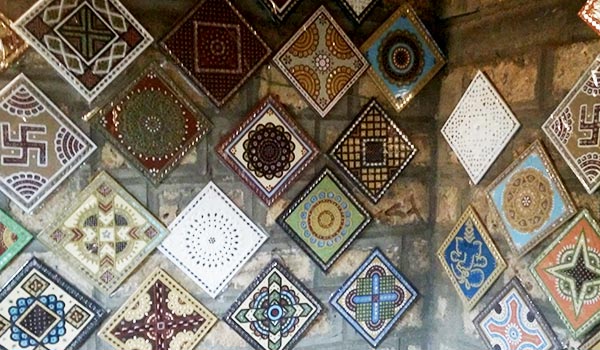
DAY 7
BHUJ
Amidst the Desert land of infinite dimensions, are suspended, quaint little villages. These are the last villages on the India-Pakistan border. Here you will come across master craft people’ exposing their traditional art, turning our master pieces every day. Their ornaments, clothes, utensils, everything they use – will make you feel as if you have stepped into lifestyle museum leaving you spellbound.
The traditions of needlework and textile arts are preserved by almost every community and caste in the semi-arid regions of Saurashtra and Kutch. A full day exploring some of the Kutchi village communities offers an insight into the traditions and the daily life of the artisans whose work is integral to the culture of the region. The village of Nirona is the only place in the world where the tradition of Rogan art is still practiced (a method of producing dyes from natural resources and castor oil and creating intricate and long-lasting designs on silk and cotton). Nirona also offers the chance to see artisans making copper bells and practicing wood lacquering. The villages of Dhordo and Ludia provide an opportunity to see Bandhani (tie and dye,) block-printing and the intricate embroidery and embellished bead and mirror-work that encapsulates the folk culture of Gujarat.
Overnight at Bhuj.

DAY 8
BHUJ-GONDAL (260KMS)
Today we drive to Gondal.
GONDAL : The Riverside palace at Gondal, a Govt. of India classified heritage hotel, and the Orchard Palace in the same town, are two mansion guest houses opened as heritage hotels. The interiors of these properties are equipped with period furniture, antiques and artifacts reminiscent of the days of the Raj. The highlight of staying at these properties is that guests can see the Royal Garages, housing vintage & classic cars, and the Naulakha Palace, which is a festival of stone carvings & houses royal memorabilia including toys of the late 19th & early 20th century, silver caskets that carried messages & gifts for the Maharaja, elephant howdahs & royal portaits. It has a royal saloon suite, which has its own drawing, dining, bedroom & bathroom in a converted railway carriage.
Overnight at Gondal.

DAY 9
GONDAL-AHMEDABAD (250KMS)
Today we visit Sanskar Kendra (City Museum), Kite Museum & L.D.Museum of miniature paintings and in the evening we take a flight to onward destination from Ahmedabad airport.
Sanskar Kendra and City Museum : The Sanskar Kendra building, designed by eminent French architect LE CORBUSIER, is situated near Sardar Bridge. It includes the City Museum, which highlights Ahmedabad from various angels including history, craft, architecture, religion and fine arts. Look out for the world’s longest incense stick at 4.5 m. The KITE MUSEUM downstairs has an interesting timeline on the history of kites, but the presentation is lacking. Open 1000-1800, Tues-Sun Closed Mon.
Kite Museum : One of the most unique Museum in Ahmedabad is Kite Museum. The Kite Museum, Ahmedabad is located Sanskar Kendra. This museum in Ahmedabad houses an extraordinary collection of rare kites built over 50 years kites that have been crafted from 400 unique colours, the Kite Museum Ahmedabad and other tourist attractions of Gujarat and other parts of India.
The Kite Museum, Ahmedabad is the brainchild of Bhanubhai Shah. For 50 years Bhanubhai Shah has carefully treasured these uniquely crafted kites. From colourful to large sizes, these kites not only were meant to adorn the blue sky but stands out as an example of which are 22 by 16 feet to some of the smallest kites as well.
One of the most lavishly designed and decorated kites in the Kite Museum, Ahmedabad are the hexagonal Rokoku which are beautiful Japanese kites. On your tour to Ahmedabad do not miss the Japanese kites in the Kite Museum, Ahmedabad. In Ahmedabad in Gujarat in India the Kite Museum is quite famous.
Lalbhai Dalpatbhai Museum : The collection includes Indian sculptures, paintings and coins. Ever since its inception in 1956, the institute has been collecting and preserving rare manuscripts and artifacts of various kinds. The credit for the collection goes to Muni Shri Punyavijayji, an erudite monk scholar, and Sheth Kasturbhai Lalbhai, the well known industrialist of Ahmedabad. Open 10:30-17:30. Closed Mon and public holidays. Entry free.
Overnight stay at Ahmedabad.

DAY 10
AHMEDABAD + DEPARETURE
Today we leave Gujarat with everlasting sweet memories.



































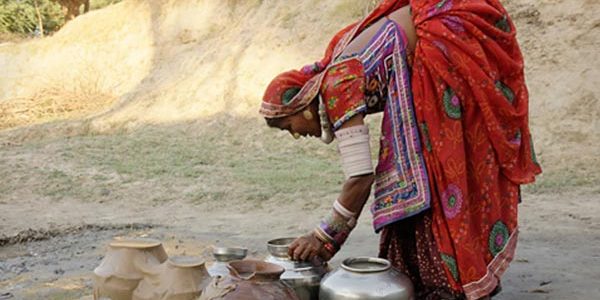
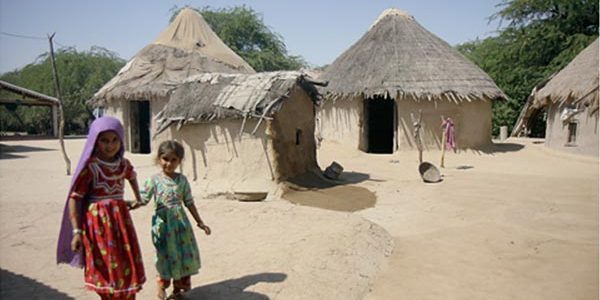

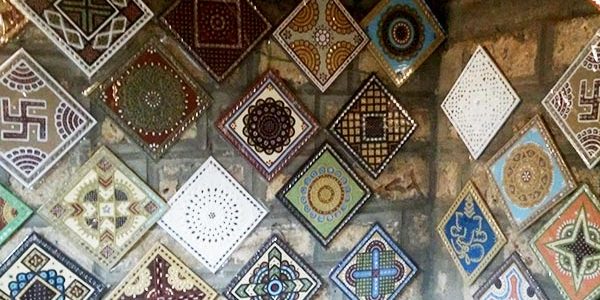
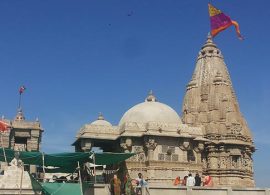
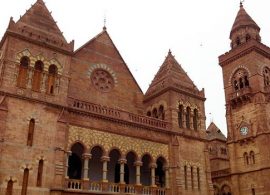
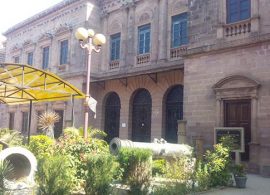
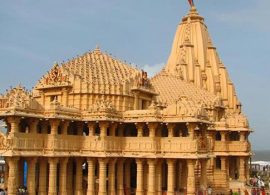
Reviews
There are no reviews yet.